Does Roku Use Data When TV Is Off? Explore Roku’s Data Consumption
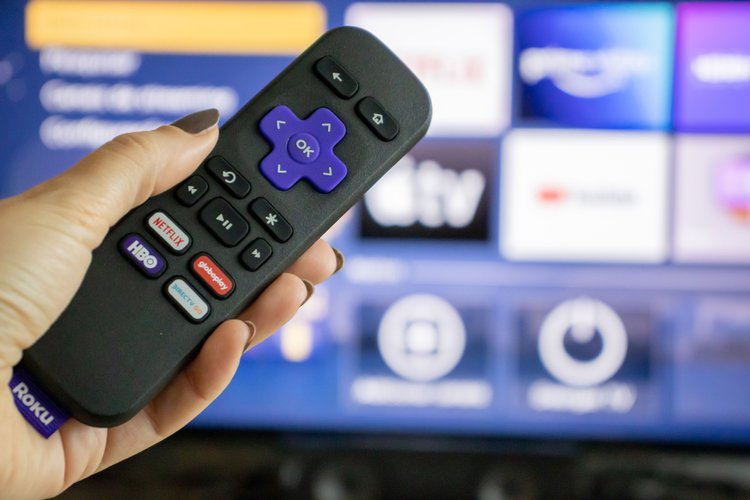
What To Know
- Roku may still consume a small amount of data when the TV is off due to background software updates and app refreshes.
- To manage data usage, Roku offers a Bandwidth Saver feature that pauses streaming after four hours of inactivity.
- Checking Roku’s exact data consumption requires accessing your router’s data usage stats, as Roku lacks a built-in monitoring feature.
In this article, I’ll explain if your Roku uses data when the TV is off and how it affects your data consumption.
We will also discover the ins and outs of Roku’s data usage, learn to track it, and find solutions to manage your monthly data allowance effectively.
Quick Navigation
Does Roku Still Use Data When My TV Is Off?
Yes, your Roku may still use data when your TV is off.
Your Roku device is still connected to the internet even when you’re TV isn’t powered on. So, although you’re not streaming content, your Roku may still be consuming a small amount of bandwidth.
This is because your Roku installs software updates when not in use. While this may seem unnecessary, these updates will ensure your Roku and its channels run smoothly, decreasing the likelihood of software glitches.

Remember, your streaming channels will also be updated when your Roku’s updates are installed, allowing you to access new features within the apps.
There is no way to disable your Roku’s internet consumption while it’s in standby mode. So, the only solution is to unplug your Roku device from its power source.
This also applies to Roku’s powered by your TV USB ports, as they can still receive power when your TV is off.
However, this means that you will most likely have to manually check for and install any updates as they won’t update automatically.
Roku’s Data Usage on Notable Streaming Providers
Consult the tables below to find the data usage for popular streaming sites Netflix, Hulu, and YouTube.
Kindly note that this chart’s data is taken from Netflix users’ data, which demonstrates that, on average, Netflix users watch content for 3.2 hours a day. This means that most Netflix users spend about 96 hours a the streaming site.
We have used this information to estimate how much data other streaming sites (i.e. Hulu and YouTube) consume per month based on their hourly data consumption.
| NETFLIX | ||||
|
Settings |
Resolution |
Data Usage / Hour |
Data Usage / Month |
Recommended Speed |
|
Low |
0.3 GB |
28.8 GB |
||
|
Medium |
0.7 GB |
67.2 GB |
||
|
High |
||||
|
SD |
854×480 | 1 GB |
96 GB |
|
|
HD |
1280×720 | 3 GB | 288 GB |
3 Mbps |
|
UHD |
3840×2160 | 7 GB | 672 GB |
15 Mbps |
Sources: *data usage* || *speed*
|
HULU |
||||
|
Settings |
Resolution | Data Usage / Hour | Data Usage / Month |
Recommended Speed |
|
720p / HD |
1280×720 | 650 MB | 62.4 GB |
3 Mbps |
|
1080p / FHD |
1920×1080 | 1.3 GB | 124.8 GB |
6 Mpbs |
|
2160p / UHD / 4k |
3840×2160 | 7 GB | 672 GB |
16 Mbps |
|
Live TV (1080p) |
1920×1080 | 3.5 GB | 336 GB |
8 Mbps |
Sources: *data usage* || *speed*
|
YOUTUBE |
||||
|
Settings |
Resolution | Data Usage / Hour | Data Usage / Month |
Recommended Speed |
|
144p |
256×144 | 90 MB |
8.64 GB |
|
|
240p |
426×240 | 250 MB |
24 GB |
|
|
360p |
640×360 | 450 MB | 43.2 GB |
0.7 Mbps |
|
480p |
854×480 | 660 MB | 63.4 GB |
1.1 Mbps |
|
720p / HD |
1280×720 | 2.7 GB | 259.2 GB |
2.5 Mbps |
|
1080p / FHD |
1920×1080 | 4.1 GB | 393.6 GB |
5 Mbps |
|
1440p / QHD |
2560×1440 | 8.1 GB |
777.6 GB |
|
|
2160p / UHD / 4k |
3840×2160 | 23 GB | 2.2 TB |
20 Mbps |
Sources: *data usage* || *speed*
Roku Bandwidth Saver
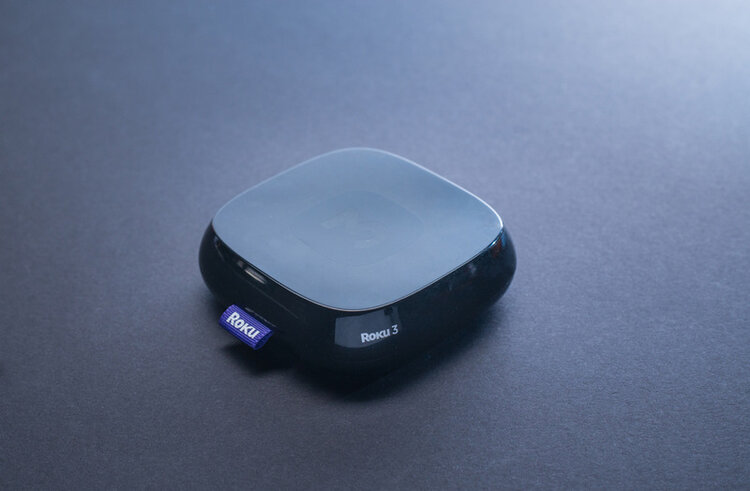
Let’s learn how to enable the Roku bandwidth saver.
The Roku bandwidth saver monitors your usage patterns. When you have touched the remote or have been watching something for four hours, it will display a message on-screen, pausing whatever you’re watching.
This not only prevents your Roku from going into standby mode, but it also saves bandwidth by pausing streaming sites, stopping unnecessary data consumption.
Bear in mind that when this setting is enabled, you must touch your Roku remote every few hours to ensure your content does not stop playing.
The bandwidth saver can be enabled in the settings.
Let’s learn how!
Step 1: Go to your Roku’s Home page by clicking the remote’s Home button.
Step 2: Select Settings from the right-side menu.
Step 3: Navigate to Network.
Step 4: Select Bandwidth Saver and toggle it on.
How To Check Your Roku Data Usage?
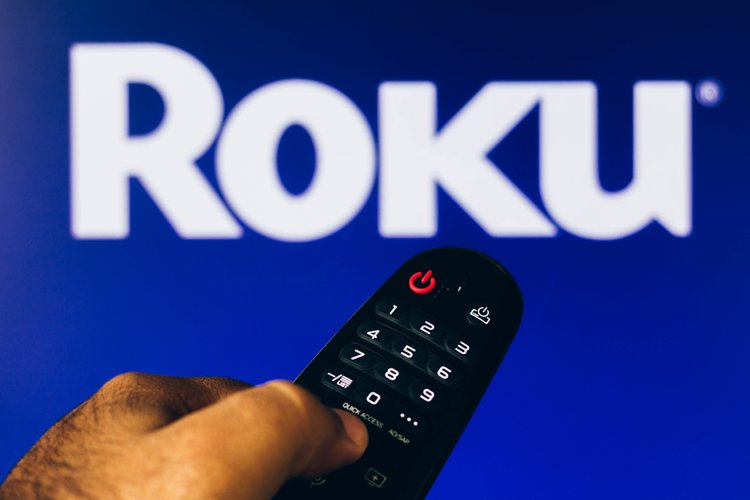
You can check your Roku’s data consumption by viewing your router’s data usage
Roku devices do not currently support a built-in data consumption monitoring feature.
Instead, you must access your router’s data consumption history and identify your Roku player’s MAC address to view its data.
Check Data Usage on Router
Please note that not every router supports data usage monitoring. If your router doesn’t have this feature, we recommend calculating your Roku’s data consumption by multiplying its hourly data usage by your total viewing hours.
This process may seem daunting, but it’s deceptively simple.
Let’s learn how to view your router’s data consumption!
Step 1: Open your preferred browser (e.g. Chrome, Edge, Firefox, Safari) on your laptop or desktop.
Step 2: Enter your router’s default gateway into the browser’s address bar. Then click search to go to your router’s admin page.
If you don’t know your router’s default gateway, follow the steps below to find it on your computer.
If you already know your router’s default gateway, you may proceed to Step 3.
- On Windows
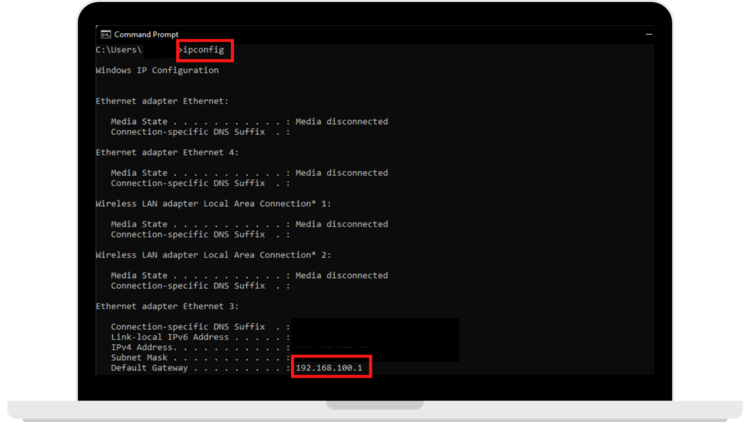
- Open your Windows computer’s Command Prompt. This can be done by clicking the Windows Start button and searching for “Command Prompt.”
- Type “ipconfig” into the Command Prompt followed by the Enter button.
- Now you will be able to see your router’s default gateway (see image above).
- On Mac and Linux
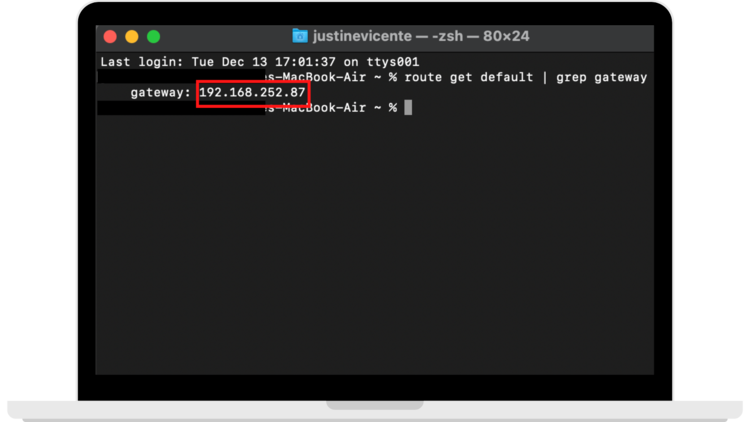
- Navigate to your computer’s Terminal by pressing Command and the Spacebar simultaneously. Then search for “terminal” and click Enter.
- Type “route get default | grep gateway” then press Enter.
- You will see your router’s default gateway below (see the above image as an example).
Step 3: Head to the router admin page and log into your account. Your login credentials can usually be found on the back of your router.
Step 4: Your router’s information may be labeled differently depending on your supplier, but you can usually find its data usage under Wireless Statistics.
Now you’ll be able to see your Roku player’s MAC address followed by its data consumption.
How to Identify Your Roku Player’s MAC Address
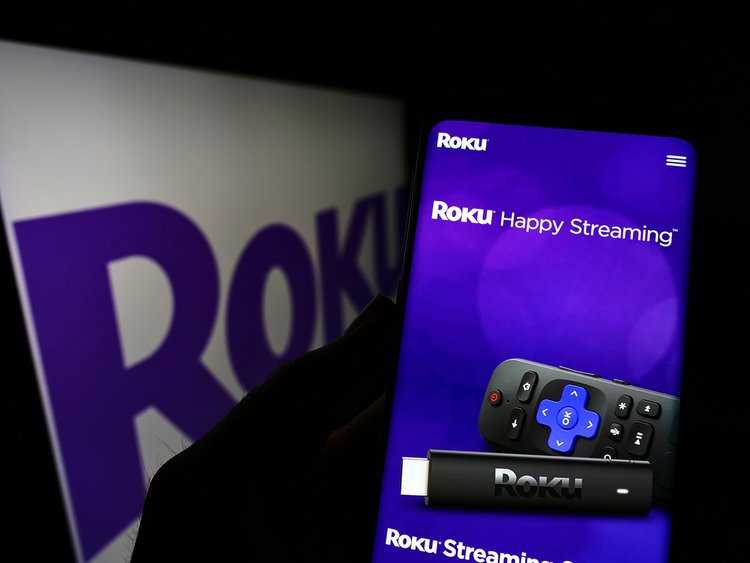
You were able to access your router’s data consumption statistics, but you’re not sure which MAC address belongs to your Roku player.
There are two ways to access your Roku player’s MAC address: looking for it on the physical device or searching for it in your Roku settings.
Let’s learn how to do both!
On the Physical Roku Device
The MAC address should be on the back or side of your Roku player, depending on its model.
This address is made up of six number pairs and looks like this: 00:00:00:00:00:00
In Your Roku’s Settings
Step 1: Press your remote’s Home button.
Step 2: Head to Settings.
Step 3: Go to Network.
Step 4: Click on About.
Step 5: You should be able to find the MAC address on this page. There may also be a wired and wireless value, depending on if you use Ethernet or Wi-Fi.
The MAC address’s format will look like this: 00:00:00:00:00:00
Bonus: How to Know How Much Time You Spend Streaming on Netflix?
You can track how much time you spend on Netflix using this Online Calculator.
We’ve provided an estimated data consumption for Netflix based on the average watch time of Netflix users.
However, you may want to calculate your Netflix watch time by multiplying Netflix’s hourly consumption rate by the number of hours you’ve spent streaming.
To do this, you will need to upload your Netflix account’s viewing activity onto an online calculator for Netflix.
You will be unable to access this information on your Roku Netflix channel. Instead, you must access it through a browser, preferably on a laptop since the Netflix website will be easier to navigate there.
Let’s learn how!
Step 1: Open Netflix on a browser of your choice. Then, log in to the Netflix account you want to download your viewing activity for.
Step 2: Once you’re logged in, head to Account.
Step 3: Go to Profile & Parental Controls.
Step 4: Select the profile whose viewing history you want to see.
Step 5: Download the profile’s viewing history by clicking on Download All.
Step 6: Once downloaded, head to Online Calculator and select Continue to upload. Then, drag and drop your account viewing history into the drop box.
Once you’ve uploaded your viewing history, the site will automatically scan it and display your total watch time. This could take a few moments, so be patient.
Wrapping Things Up
How much data your Roku consumes will depend on which apps you’re using, the picture’s resolution, and how often you stream content. Streaming consumes the majority of your Roku’s bandwidth.
Roku devices still consume a small amount of data when in standby mode, so you must unplug it from power to stop it from using your router’s bandwidth.
You can check your Roku’s data consumption through your router’s Wireless Statistics which can be accessed via its default gateway.
Did you know how much data a Roku player consumes? Let us know in the comments below!
Yesenia Achlim is a technical copywriter and editor with a focus on AV equipment. She aims to break down complicated topics and make technology accessible, no matter your technical expertise. When she’s not teaching you how to replace a projector lamp, you can find her reading and baking.

